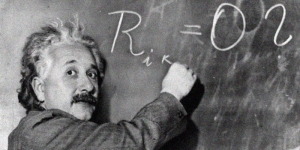
The Bleeding Edge
Richard Clarke reviews The Bleeding Edge, by Bob Hughes, New Internationalist 2016
A discussion paper published by the (left-leaning) Institute for Public Policy Research (IPPR) at the end of last year argues that automation ‘risks reproducing and amplifying existing inequalities within the economy.’ Some 44% of all jobs, (involving almost 14 million workers) it suggests, could be automated, ‘hollowing out’ middle income occupations in industry and the service sector, creating large scale unemployment. Revealingly entitled ‘Managing Automation’ the report proposes a range of measures including a ‘Citizen’s Wealth Fund’, an expansion of employee ownership trusts and compulsory profit sharing in large companies. Coupled with the establishment of a new Authority to regulate the ethical use of robotics and artificial intelligence (AI), this will permit a ‘managed acceleration of automation’ to ‘reap the full productivity benefits and enable higher wages’ and at the same time reduce working time.

Most of us would reply ‘if only’ to this. And some of us at least would at the same time point out that Fabian ‘solutions’ to social challenges – advocacy which appeals to humanity and logic but which side-steps the realities of power and control within a world dominated by globalised finance capital, are unlikely to be adopted within an inherently unequal and exploitative economic system.
In this respect the IPPR report joins a pantheon of related publications such as Richard Wilkinson and Kate Pickett’s The Spirit Level, and Danny Dorling’s The Equality Effect. All argue (in different ways) that greater equality is not just morally good, but ‘good for the economy’ – and that it can be achieved without addressing the fundamental contradictions between capital and labour. Thomas Piketty’s Capital in the Twenty-First Century, for example, argues for ‘a social state for the twenty-first century’ funded by a ‘global tax on capital’. But there is little indication of how we might get there.
Despite its sub-title ‘Why technology turns toxic in an unequal world’, Bob Hughes’ The Bleeding Edge goes well beyond arguing for more equality. For Hughes, technologies themselves are not neutral, and the social and political context doesn’t (just) dictate their impact, it determines the content of the technologies themselves. To be fair, the IPP itself concedes that ‘Technologies are technical artefacts whose effects are powerfully shaped by the broader social, technical, and economic systems they are embedded in.’ But Hughes' strength - and, ultimately, his weakness - is that he dares to follow this up by exploring just how ‘inequality’ (read: capitalism) has distorted the world, and how it might be different.
At times Bleeding Edge gets close to an unconvincing paean in favour of craft production. The argument that making cars from steel rather than wood (pioneered by Ford motors in the 1920s) was motivated at least in part by ‘the capitalist’s ancient preference for unskilled, unorganised labor, and fear of being reliant on employees’ personal skills’ is probably true. But ‘the assumption that steel is the obvious choice for automobiles could be called a kind of ‘materialism’, a discriminatory ‘ism’ of the same family as racism and sexism’ (the implication being that wooden automobiles would somehow be ‘better’ but in an unspecified way) is unconvincing. Surely we should be positing public transport (not wooden craft-manufactured cars) as an alternative to the domination of our roads, economies and our lives, by the internal combustion engine (and perhaps in future by the equally alienating electric, possibly automated, robotic car)?

And to extend the argument to aircraft – that monocoque aluminium airframes, a product of the cold war, could, in a less unequal world, instead be wooden or composite, with greater payloads (though travelling slower) is to miss the fundamental economic and environmental insanity of mass transit by air – whether of supermarket flowers flown in in from Kenya or of UK holidaymakers to Islamabad or Ibiza. Again, Hughes addresses this in his ‘solutions’ – but only to extol the virtues of peasant/organic agriculture (in place of intensive arable), less commuting, more bicycle lanes and horse-drawn vehicles – without any real exploration of how to get there.
At the same time there are several features which make Bleeding Edge worth reading. The first is Hughes’ attack on technofatalism – the idea that technologies are not just neutral but, somehow unstoppable and that ‘we’ must somehow learn to manage them.
Ironically, Dorling’s opening sentence in his foreword to Bleeding Edge reads ‘Technology is neutral.’ In ‘rejecting both apocalyptic pessimism and techno-optimism’ Hughes by contrast argues that technology is anything but neutral. Technologies, he argues, from the invention of agriculture onwards, are formed and forged by the interests that they serve.
The second strength is the originality and breadth of Hughes’s survey. Written with passion and drawing on an eclectic array of sources, it ranges from food and farming to IT.

Delving into history, Hughes shows how capitalism refused to have anything to do with computers unless their development was underwritten by governments. The micro-chip and the digital revolution in particular were a product of military investment, their subsequent development ‘propelled by a self-reinforcing need to maintain sales.’ Most of the most significant technological innovations, he argues – from the industrial revolution to high-tech enterprises today – are not the product of research undertaken by large corporations but of initiatives by small companies and (even today) of individuals. Capitalism, he maintains, is good at taking up and propagating but not at initiating.
Hughes challenges the idea that computers are, somehow, intrinsically egalitarian – a myth fostered by Google’s creative elite in pretend utopias (communal dining facilities, sports halls, democratic meeting rooms). In fact (he argues) it is a paradox that the most competitive and profitable hi-tech industries are propagated from ‘egalitarian’ collaborative bubbles, subsequently manifest in the exploitation and impoverishment of the people who have to produce the goods, and the environment. The pretend utopias of Silicon Valley software generation contrast with the reality of degrading and dangerous work in polluting rare-earth mineral mines, the soulless, exploitative manufacturing and assembly plants of IT hardware, and starvation pay for those who survive by sorting and recycling yesterday’s high-tech junk to make way for the latest, more profitable, consumer fashion.
The analysis in Bleeding Edge makes much of ‘positional’ arguments - that once adopted by a given manufacturer competitors must follow suit, even though the technological trajectory may be an arbitrary and inefficient one. Applying this to computing in what for this reviewer is his most provoking, but shaky, thesis he claims that analogue computers failed, not because of any intrinsic limitations but simply because digital computers offered earlier profits. Is there really a future for analogue computing? In principle much more efficient at simulating biological systems they currently have to be programmed by hand (although new compilers may remove this limitation) and they have a tiny proportion of the computing power of digital computers. But Hughes’ point isn’t whether analogue computers are intrinsically ‘better’ than digital computers; it is, rather, that far from diversifying the range of technologies available ‘competitive pressure narrows all options.’ And in the process, in the pursuit of profit, it creates (and requires) inequality and impoverishes the planet.
Like Piketty, Dorling, Wilkinson & Pickett et al, Hughes is weakest when it comes to solutions. But unlike them, those that he advocates are not so much policy measures (taxation, co-operatives, worker representation on company boards) as what he himself labels ‘utopian’ thinking – ‘envisioning’ how the world might be turned the ‘right way up’; ‘rethinking’ food and work; ‘shrinking roads and expanding diversity’ and engaging with community initiatives - from the bottom up. And it is precisely Hughes’ more speculative weaknesses – from wooden cars to analogue computing — that make the book so thought provoking. Bleeding Edge deserves to head these other authors on the reading list of anyone interested in alternatives to the technological status quo.












